General Conclusion:
The Nature of the Apocryphon of Moses
1Q29, 4Q375, 4Q376, and 4Q408 attest to a complex and unique literary composition. As they share common interests and formulations they are considered correctly in the research to be copies of a single composition, whose primary concern is a reworking of the Pentateuchal laws in order to establish that the high priest constitutes the supreme judicial authority in the land. At the same time, these manuscripts differ in several respects and the overlaps between them are only partial. The following list reviews the common elements shared by all four manuscripts, as well as the small variations displayed by them:
 (tongues of fire): This phrase appears four times in three copies (4Q376 ii 1, 4Q408 11 2, 1Q29 1 3, and 1Q29 2 3). In 1Q29 2 3, the expression is cited differently than in the other three examples in that it gives the number of the tongues as three and does not use the preposition bet . Together with the different sequence of events described in 1Q29 1, these differences attest to slight variations among the copies with the two fragments of 1Q29 each offering a particular version. The fragment of 4Q408 possibly overlaps the fragment of 4Q376 but due to its fragmentary state this cannot be ascertained.
(tongues of fire): This phrase appears four times in three copies (4Q376 ii 1, 4Q408 11 2, 1Q29 1 3, and 1Q29 2 3). In 1Q29 2 3, the expression is cited differently than in the other three examples in that it gives the number of the tongues as three and does not use the preposition bet . Together with the different sequence of events described in 1Q29 1, these differences attest to slight variations among the copies with the two fragments of 1Q29 each offering a particular version. The fragment of 4Q408 possibly overlaps the fragment of 4Q376 but due to its fragmentary state this cannot be ascertained.
The expression tongues of fire nonetheless constitutes a unique and key motif in this composition. Appearing in the context of diverse laws, it highlights the high priests inquiry of God via the Urim and the conveyance of the divine answer to the people assembled outside the temple by the shining of the stones on his breastplate. The context in which the phrase occurs in 4Q376 ii 1 relates to whether or not the people should engage in a permitted war. Although fragmented, the formulation of 4Q408 11 may parallel that in 4Q376. Although the sequence of 1Q29 124 parallels 4Q376 ii, the continuation of the former text does not overlap with the latter and is not consistent with the continuation of 4Q376 iiiii. It is therefore suggested that the phrase in 1Q29 1 relates to another law that also requires that the high priest inquire of God for an answer via the Urim. As proposed in the comments to this fragment, the different circumstance referred to in 1Q29 1 is, perhaps, the prophet who speaks rebellion who refuses to recognize the high priests authority or the divine answer he receives via the Urim.
 : This term appears four times in three scrolls and is reconstructed once. It displays a usage unique to the present writing. It appears in three phrases:
: This term appears four times in three scrolls and is reconstructed once. It displays a usage unique to the present writing. It appears in three phrases:  (1Q29 1 2, 4Q408 11 1 [reconstructed]),
(1Q29 1 2, 4Q408 11 1 [reconstructed]),  (4Q376 ii 1, 4Q408 11 2), and
(4Q376 ii 1, 4Q408 11 2), and  (1Q29 2 2). In each case, the allusion is to one of the two stones on the shoulders of the high priests garment. The various fragments of the composition evince a belief that both the stones of the high priests breastplate and the stones for remembrance shone as he went out of the temple. In the Discussion on 4Q376, it is noted that the Urim came to be identified with the stones on the breastplate and the stones on the shoulders in Second Temple Jewish literature. As remarked there, Josephus account is one of the clearest testimonies of this trend.
(1Q29 2 2). In each case, the allusion is to one of the two stones on the shoulders of the high priests garment. The various fragments of the composition evince a belief that both the stones of the high priests breastplate and the stones for remembrance shone as he went out of the temple. In the Discussion on 4Q376, it is noted that the Urim came to be identified with the stones on the breastplate and the stones on the shoulders in Second Temple Jewish literature. As remarked there, Josephus account is one of the clearest testimonies of this trend.
 : The phrase appears in three of the copies (4Q376 ii, 4Q408 11, and 1Q29 1 24) in varying states of preservation. While this suggests parallelism among the manuscripts, the continuation of 1Q29 1 57 does not correspond to the content of 4Q376 iiiii. This complex relationship is a key issue in understanding the structure and reconstruction of the composition. Strugnell, Latour, and Qimron contend that the four scrolls are parallels, thus maintaining that the document deals with how the true/false prophet is to be recognized. However, as remarked in the Comments on 4Q376 and 1Q29, no sequentiality can be reconstructed between 4Q375 and 4Q376. It is herein posited that no complete overlap exists between 4Q376 ii and 1Q29 1, and that the usage of the same expressions in the copies relates to diverse difficult laws that require inquiry of God via the Urim. However, 4Q408 11 probably does overlap with 4Q376 ii.
: The phrase appears in three of the copies (4Q376 ii, 4Q408 11, and 1Q29 1 24) in varying states of preservation. While this suggests parallelism among the manuscripts, the continuation of 1Q29 1 57 does not correspond to the content of 4Q376 iiiii. This complex relationship is a key issue in understanding the structure and reconstruction of the composition. Strugnell, Latour, and Qimron contend that the four scrolls are parallels, thus maintaining that the document deals with how the true/false prophet is to be recognized. However, as remarked in the Comments on 4Q376 and 1Q29, no sequentiality can be reconstructed between 4Q375 and 4Q376. It is herein posited that no complete overlap exists between 4Q376 ii and 1Q29 1, and that the usage of the same expressions in the copies relates to diverse difficult laws that require inquiry of God via the Urim. However, 4Q408 11 probably does overlap with 4Q376 ii.
The root  , associated with
, associated with  or
or  to depict the high priests activity: The high priests exitapparently from the temple to the people assembled outside in order to convey Gods answer to his inquiry via the Urimis adduced on three occasions:
to depict the high priests activity: The high priests exitapparently from the temple to the people assembled outside in order to convey Gods answer to his inquiry via the Urimis adduced on three occasions:  (4Q375 ii 89),
(4Q375 ii 89),  (4Q376 ii 1), and (
(4Q376 ii 1), and (  1Q29 2 1). Most likely, 1Q29 57 3 also employed the same root:
1Q29 2 1). Most likely, 1Q29 57 3 also employed the same root:  , as the context of this fragment also possibly relates to the high priests exit. The theme of the high priest leaving the temple to publicly deliver Gods answer to his inquiry via the Urim is, in fact, characteristic of the composition as a whole. The three (or four) extant accounts of these circumstances may attest to the fact that this document reworks various laws and describes diverse cases in which the high priest inquired of God and was given an answer, which he conveyed to the people. Were this to have been merely a determination of whether a prophet was true or false, no need would have existed for the occurrence of the repeated exits to the assembly.
, as the context of this fragment also possibly relates to the high priests exit. The theme of the high priest leaving the temple to publicly deliver Gods answer to his inquiry via the Urim is, in fact, characteristic of the composition as a whole. The three (or four) extant accounts of these circumstances may attest to the fact that this document reworks various laws and describes diverse cases in which the high priest inquired of God and was given an answer, which he conveyed to the people. Were this to have been merely a determination of whether a prophet was true or false, no need would have existed for the occurrence of the repeated exits to the assembly.
 : This expression appears twice (4Q375 i 9 and 4Q376 i 1), with the term
: This expression appears twice (4Q375 i 9 and 4Q376 i 1), with the term  also being employed on its own elsewhere (4Q376 ii 2; 1Q29 1 4; 1Q29 57 2). In this writing, it designates the person known as the high priest in the biblical priestly source. The references highlight the acts performed by this figure, the composition as a whole presenting the ritual ceremonies he conducts in order to receive Gods answer to baffling legal cases.
also being employed on its own elsewhere (4Q376 ii 2; 1Q29 1 4; 1Q29 57 2). In this writing, it designates the person known as the high priest in the biblical priestly source. The references highlight the acts performed by this figure, the composition as a whole presenting the ritual ceremonies he conducts in order to receive Gods answer to baffling legal cases.
 together with
together with  : The phrase, comprised of the noun
: The phrase, comprised of the noun 


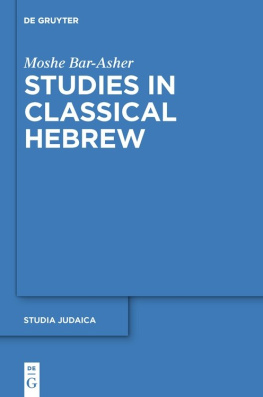
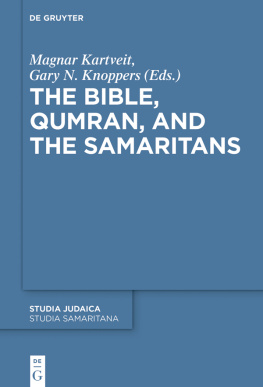
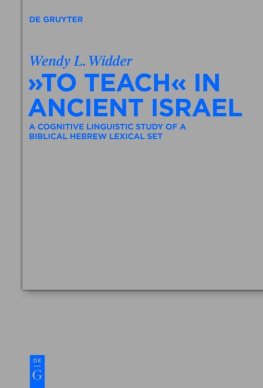
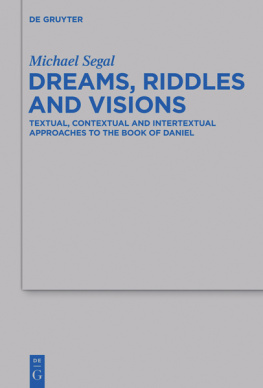



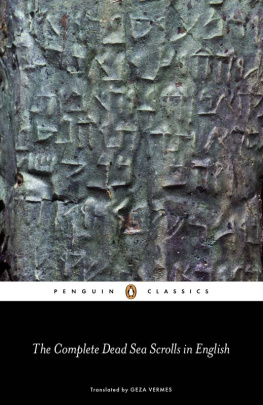
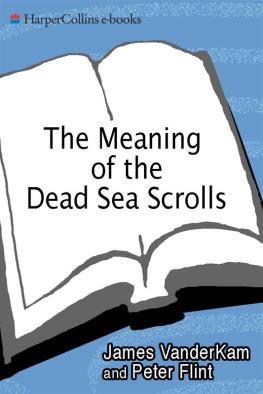
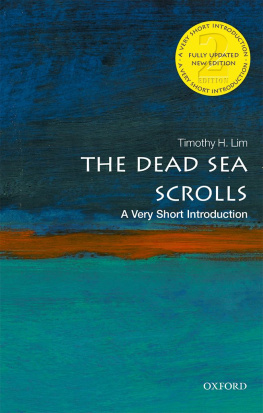

 (tongues of fire): This phrase appears four times in three copies (4Q376 ii 1, 4Q408 11 2, 1Q29 1 3, and 1Q29 2 3). In 1Q29 2 3, the expression is cited differently than in the other three examples in that it gives the number of the tongues as three and does not use the preposition bet . Together with the different sequence of events described in 1Q29 1, these differences attest to slight variations among the copies with the two fragments of 1Q29 each offering a particular version. The fragment of 4Q408 possibly overlaps the fragment of 4Q376 but due to its fragmentary state this cannot be ascertained.
(tongues of fire): This phrase appears four times in three copies (4Q376 ii 1, 4Q408 11 2, 1Q29 1 3, and 1Q29 2 3). In 1Q29 2 3, the expression is cited differently than in the other three examples in that it gives the number of the tongues as three and does not use the preposition bet . Together with the different sequence of events described in 1Q29 1, these differences attest to slight variations among the copies with the two fragments of 1Q29 each offering a particular version. The fragment of 4Q408 possibly overlaps the fragment of 4Q376 but due to its fragmentary state this cannot be ascertained. : This term appears four times in three scrolls and is reconstructed once. It displays a usage unique to the present writing. It appears in three phrases:
: This term appears four times in three scrolls and is reconstructed once. It displays a usage unique to the present writing. It appears in three phrases:  (1Q29 1 2, 4Q408 11 1 [reconstructed]),
(1Q29 1 2, 4Q408 11 1 [reconstructed]),  (4Q376 ii 1, 4Q408 11 2), and
(4Q376 ii 1, 4Q408 11 2), and  (1Q29 2 2). In each case, the allusion is to one of the two stones on the shoulders of the high priests garment. The various fragments of the composition evince a belief that both the stones of the high priests breastplate and the stones for remembrance shone as he went out of the temple. In the Discussion on 4Q376, it is noted that the Urim came to be identified with the stones on the breastplate and the stones on the shoulders in Second Temple Jewish literature. As remarked there, Josephus account is one of the clearest testimonies of this trend.
(1Q29 2 2). In each case, the allusion is to one of the two stones on the shoulders of the high priests garment. The various fragments of the composition evince a belief that both the stones of the high priests breastplate and the stones for remembrance shone as he went out of the temple. In the Discussion on 4Q376, it is noted that the Urim came to be identified with the stones on the breastplate and the stones on the shoulders in Second Temple Jewish literature. As remarked there, Josephus account is one of the clearest testimonies of this trend. : The phrase appears in three of the copies (4Q376 ii, 4Q408 11, and 1Q29 1 24) in varying states of preservation. While this suggests parallelism among the manuscripts, the continuation of 1Q29 1 57 does not correspond to the content of 4Q376 iiiii. This complex relationship is a key issue in understanding the structure and reconstruction of the composition. Strugnell, Latour, and Qimron contend that the four scrolls are parallels, thus maintaining that the document deals with how the true/false prophet is to be recognized. However, as remarked in the Comments on 4Q376 and 1Q29, no sequentiality can be reconstructed between 4Q375 and 4Q376. It is herein posited that no complete overlap exists between 4Q376 ii and 1Q29 1, and that the usage of the same expressions in the copies relates to diverse difficult laws that require inquiry of God via the Urim. However, 4Q408 11 probably does overlap with 4Q376 ii.
: The phrase appears in three of the copies (4Q376 ii, 4Q408 11, and 1Q29 1 24) in varying states of preservation. While this suggests parallelism among the manuscripts, the continuation of 1Q29 1 57 does not correspond to the content of 4Q376 iiiii. This complex relationship is a key issue in understanding the structure and reconstruction of the composition. Strugnell, Latour, and Qimron contend that the four scrolls are parallels, thus maintaining that the document deals with how the true/false prophet is to be recognized. However, as remarked in the Comments on 4Q376 and 1Q29, no sequentiality can be reconstructed between 4Q375 and 4Q376. It is herein posited that no complete overlap exists between 4Q376 ii and 1Q29 1, and that the usage of the same expressions in the copies relates to diverse difficult laws that require inquiry of God via the Urim. However, 4Q408 11 probably does overlap with 4Q376 ii. , associated with
, associated with  or
or  to depict the high priests activity: The high priests exitapparently from the temple to the people assembled outside in order to convey Gods answer to his inquiry via the Urimis adduced on three occasions:
to depict the high priests activity: The high priests exitapparently from the temple to the people assembled outside in order to convey Gods answer to his inquiry via the Urimis adduced on three occasions:  (4Q375 ii 89),
(4Q375 ii 89),  (4Q376 ii 1), and (
(4Q376 ii 1), and (  1Q29 2 1). Most likely, 1Q29 57 3 also employed the same root:
1Q29 2 1). Most likely, 1Q29 57 3 also employed the same root:  , as the context of this fragment also possibly relates to the high priests exit. The theme of the high priest leaving the temple to publicly deliver Gods answer to his inquiry via the Urim is, in fact, characteristic of the composition as a whole. The three (or four) extant accounts of these circumstances may attest to the fact that this document reworks various laws and describes diverse cases in which the high priest inquired of God and was given an answer, which he conveyed to the people. Were this to have been merely a determination of whether a prophet was true or false, no need would have existed for the occurrence of the repeated exits to the assembly.
, as the context of this fragment also possibly relates to the high priests exit. The theme of the high priest leaving the temple to publicly deliver Gods answer to his inquiry via the Urim is, in fact, characteristic of the composition as a whole. The three (or four) extant accounts of these circumstances may attest to the fact that this document reworks various laws and describes diverse cases in which the high priest inquired of God and was given an answer, which he conveyed to the people. Were this to have been merely a determination of whether a prophet was true or false, no need would have existed for the occurrence of the repeated exits to the assembly. : This expression appears twice (4Q375 i 9 and 4Q376 i 1), with the term
: This expression appears twice (4Q375 i 9 and 4Q376 i 1), with the term  also being employed on its own elsewhere (4Q376 ii 2; 1Q29 1 4; 1Q29 57 2). In this writing, it designates the person known as the high priest in the biblical priestly source. The references highlight the acts performed by this figure, the composition as a whole presenting the ritual ceremonies he conducts in order to receive Gods answer to baffling legal cases.
also being employed on its own elsewhere (4Q376 ii 2; 1Q29 1 4; 1Q29 57 2). In this writing, it designates the person known as the high priest in the biblical priestly source. The references highlight the acts performed by this figure, the composition as a whole presenting the ritual ceremonies he conducts in order to receive Gods answer to baffling legal cases. together with
together with  : The phrase, comprised of the noun
: The phrase, comprised of the noun 